“A Ferrari F430 you say? Oh, those are cool, but you can’t drive stuff like that on the street”.
I can’t tell you how sick I am of hearing such predictable and overused clichés when it comes to talking about supercars. That being said, I’m not sure if people are just misinformed or stuck in the 80’s, or perhaps both - but the fact remains that such a mindset can no longer be used, as the automobiles in this particular segment have started to naturally evolve into cars that are more casually usable . Quite simply, more than most of today’s supercars have been designed with regular road use in mind
The immediate question following is of course, when, and who, for that matter, decided that supercars should be usable?
 The outcome of that story is subject to great debate, but in my honest opinion such a trend began with the Porsche 959 – which happened to be one of, if not the first vehicle of this type to transcend a barrier that had previously been thought unbreakable. Mind you, that’s not to take credit away from some of the other greats which helped refine that image, like the 911 Turbo and the Honda NSX – both of which arguably served their purpose as daily drivers in ways marques like Lamborghini and Ferrari could only dream of at the time.
The outcome of that story is subject to great debate, but in my honest opinion such a trend began with the Porsche 959 – which happened to be one of, if not the first vehicle of this type to transcend a barrier that had previously been thought unbreakable. Mind you, that’s not to take credit away from some of the other greats which helped refine that image, like the 911 Turbo and the Honda NSX – both of which arguably served their purpose as daily drivers in ways marques like Lamborghini and Ferrari could only dream of at the time.
The evidence to support my theory of supercars no longer being “hardcore weekend cars” is rather evident by the following paragraphs.
For starters, the equipment levels to which these recent supercars are being subjected to is quite unlike anything before. Since when did vehicles like a Porsche Carrera GT offer such as options as an air-conditioning system that actually works, a proper stereo system (with subwoofers!) and even adjustable pedals? Furthermore, these particular items I speak of are no longer just options, but are becoming necessities and expected on vehicles sporting such ridiculously high price tags.
Also worth noting and unlike the supercars of the ‘90’s, is that these features actually perform like they’re supposed to, and even more importantly when we’re discussing supercars, they don’t break down after 5000 miles! The cabin climate systems they are fitting actually produce more heat than a toaster plugged into the wall and moreover, the speaker systems are being built with actual sound quality in mind and not something reminiscent of a 1960’s radio. Want proof? Honestly, why else does Aston Martin offer a 950-watt stereo with Dolby Logic II for their DB9? While I fully realize the DB9 is a ‘GT’ car, the fact remains such is now expected.
Other such features such as power steering, ABS and traction control are now becoming an industry standard and consequently a must- have for all great supercars.
No longer are owners being left in a bare carbon tub with no comfort as the newer generation of supercars are constantly focusing on ergonomically designed interiors. No one can doubt that these vehicles are still somewhat of a tight fit, yet nonetheless, you no longer have to detach your elbows from your body in order to drive one with skill. Meanwhile, the desire for better visibility has become paramount on the majority of these supposedly ‘un-drivable fancy sports cars’. This is a far cry from the past when rearward vision in an exotic car usually meant looking though something that was just about the size of a mail slot.
My point of view is not unique in this regard; ask an owner of one of these miraculous vehicles or any automotive journalist who has much experience driving them.
Further backing up my point is the constant recent talk of these vehicles actually allowing the owners to drive them comfortably at high speeds and actually use them in an urban environment. While high-end vehicles from the mid-sized Ferrari F355 to the whale-sized Jaguar XJ220 were often labelled in the past with such comments as “awful ride quality”, “inconsistent steering input”, “cheesy build quality” and the “lack of driveability on either road or track”, the same cannot be said for the newer generation of supercars.
For instance, the 600bhp Italian exotic by the name of the ‘Pagani Zonda’, is a vehicle that is constantly praised for its user friendliness (both on and off the track). Often complimented is its suspension setup, which allows a ride quality that is not only sports car like, but also ample and smooth. Ample and smooth enough so that one can actually enjoy his or her supercar while burbling along at legal speeds and with the addition of proper shock absorbers, the Pagani Zonda remains a vehicle that can apparently adapt to various road surfaces without any real trouble. With that being said, the Zonda is clearly a supercar that rewards its owner with the typical excitement expected of such a vehicle, but without the bone-crunching and body-smashing ride typical of the past.
I can’t tell you how sick I am of hearing such predictable and overused clichés when it comes to talking about supercars. That being said, I’m not sure if people are just misinformed or stuck in the 80’s, or perhaps both - but the fact remains that such a mindset can no longer be used, as the automobiles in this particular segment have started to naturally evolve into cars that are more casually usable . Quite simply, more than most of today’s supercars have been designed with regular road use in mind
The immediate question following is of course, when, and who, for that matter, decided that supercars should be usable?
 The outcome of that story is subject to great debate, but in my honest opinion such a trend began with the Porsche 959 – which happened to be one of, if not the first vehicle of this type to transcend a barrier that had previously been thought unbreakable. Mind you, that’s not to take credit away from some of the other greats which helped refine that image, like the 911 Turbo and the Honda NSX – both of which arguably served their purpose as daily drivers in ways marques like Lamborghini and Ferrari could only dream of at the time.
The outcome of that story is subject to great debate, but in my honest opinion such a trend began with the Porsche 959 – which happened to be one of, if not the first vehicle of this type to transcend a barrier that had previously been thought unbreakable. Mind you, that’s not to take credit away from some of the other greats which helped refine that image, like the 911 Turbo and the Honda NSX – both of which arguably served their purpose as daily drivers in ways marques like Lamborghini and Ferrari could only dream of at the time.The evidence to support my theory of supercars no longer being “hardcore weekend cars” is rather evident by the following paragraphs.
For starters, the equipment levels to which these recent supercars are being subjected to is quite unlike anything before. Since when did vehicles like a Porsche Carrera GT offer such as options as an air-conditioning system that actually works, a proper stereo system (with subwoofers!) and even adjustable pedals? Furthermore, these particular items I speak of are no longer just options, but are becoming necessities and expected on vehicles sporting such ridiculously high price tags.
Also worth noting and unlike the supercars of the ‘90’s, is that these features actually perform like they’re supposed to, and even more importantly when we’re discussing supercars, they don’t break down after 5000 miles! The cabin climate systems they are fitting actually produce more heat than a toaster plugged into the wall and moreover, the speaker systems are being built with actual sound quality in mind and not something reminiscent of a 1960’s radio. Want proof? Honestly, why else does Aston Martin offer a 950-watt stereo with Dolby Logic II for their DB9? While I fully realize the DB9 is a ‘GT’ car, the fact remains such is now expected.
Other such features such as power steering, ABS and traction control are now becoming an industry standard and consequently a must- have for all great supercars.
No longer are owners being left in a bare carbon tub with no comfort as the newer generation of supercars are constantly focusing on ergonomically designed interiors. No one can doubt that these vehicles are still somewhat of a tight fit, yet nonetheless, you no longer have to detach your elbows from your body in order to drive one with skill. Meanwhile, the desire for better visibility has become paramount on the majority of these supposedly ‘un-drivable fancy sports cars’. This is a far cry from the past when rearward vision in an exotic car usually meant looking though something that was just about the size of a mail slot.
My point of view is not unique in this regard; ask an owner of one of these miraculous vehicles or any automotive journalist who has much experience driving them.
Further backing up my point is the constant recent talk of these vehicles actually allowing the owners to drive them comfortably at high speeds and actually use them in an urban environment. While high-end vehicles from the mid-sized Ferrari F355 to the whale-sized Jaguar XJ220 were often labelled in the past with such comments as “awful ride quality”, “inconsistent steering input”, “cheesy build quality” and the “lack of driveability on either road or track”, the same cannot be said for the newer generation of supercars.
For instance, the 600bhp Italian exotic by the name of the ‘Pagani Zonda’, is a vehicle that is constantly praised for its user friendliness (both on and off the track). Often complimented is its suspension setup, which allows a ride quality that is not only sports car like, but also ample and smooth. Ample and smooth enough so that one can actually enjoy his or her supercar while burbling along at legal speeds and with the addition of proper shock absorbers, the Pagani Zonda remains a vehicle that can apparently adapt to various road surfaces without any real trouble. With that being said, the Zonda is clearly a supercar that rewards its owner with the typical excitement expected of such a vehicle, but without the bone-crunching and body-smashing ride typical of the past.

And, a long trip or urban crawling is the same in terms of sound ambiance, because being introduced into today’s supercars is excellent sound insulation and efficient yet restrictive exhausts so that these cars can actually be used in a proper capacity.
Now the Pagani Zonda is merely one example, and honestly, such usability is something that doesn’t apply to all of the supercars being produced today, but most definitely to a majority of them.
The old ‘show and display’ insurance plan (which restricts mileage to low numbers), purposely made for vehicles like the Pagani in the past is now often being thrown away as owners want full and unrestricted use of their vehicles. One practical result of the new everyday driveability and the owner’s desire to to exploit it is that these some of these wonder cars are showing up recently on exotic used car lots with upwards of 60,000 miles! Maybe there’s hope for me yet in terms of buying an exotic car someday, even if I’m still making a not-so-exotic income.
What makes this all even more impressive is the fact that despite these vehicles are now able to act like Clark Kent when needed, they have all most certainly simultaneously increased their level of superpowers. Admittedly and perhaps obviously, supercars are still a far cry from being as useable as a Toyota Camry; but the fact is these cars are no longer pieces intended for track days or the show stand.
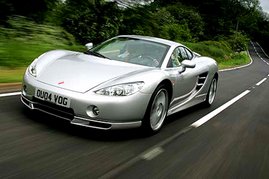
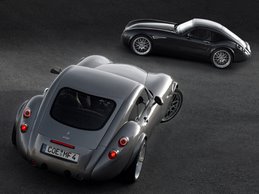
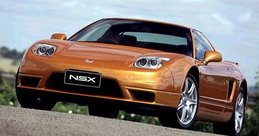
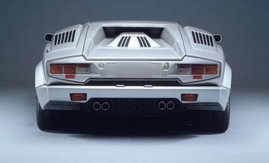

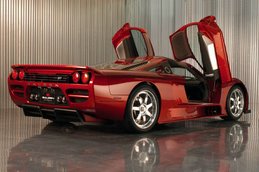
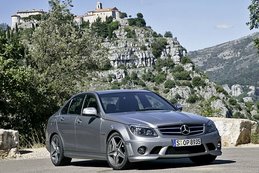
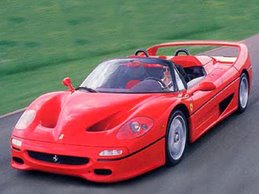

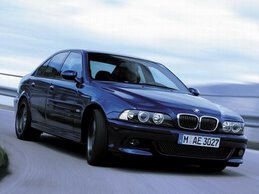



No comments:
Post a Comment